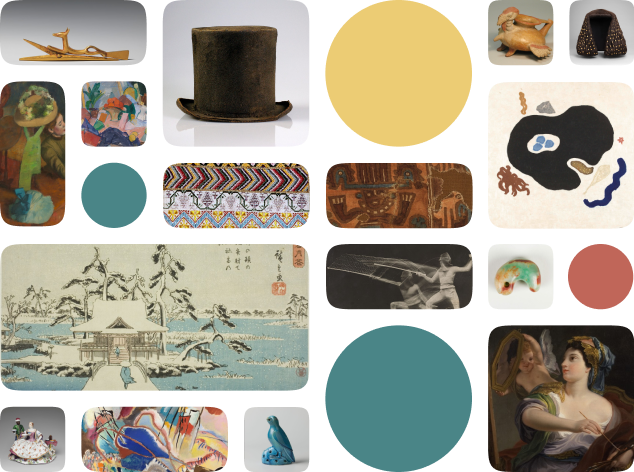Saber (Kilij) with Scabbard
Creator Name
Cultural Context
Date
Source
About the work
This sword sports a bit of trickery. Its steel blade bears the signature of Haji Sunqur, a famous 16th century Istanbul-based swordsmith, but the blade was made in Iran, in the late 18th or early 19th century. Perhaps a subsequent owner added the signature, in an attempt to increase the sword’s value or invoke the power of the historical swordsmith. The scabbard and curved hilt were made in either Turkey or North Africa in the 19th century. Also called a pistol grip, this style was popular in the region. After Napoleon invaded Egypt in 1798, the pistol grip spread to Europe and North America. European and North American soldiers called it a “Mamluk saber.” The sword’s materials are as international as its manufacture. It contains wood, steel, gold, leather, and rhino horn, a rare material sourced from Africa or South Asia.
Metropolitan Museum of Art Object Description
Saber (Kilij) with scabbard
Work details
"--" = no data available
Title
Creator
Worktype
Cultural Context
Material
Dimensions
Technique
--
Language
--
Date
Provenance
Style Period
--
Rights
Inscription
--
Location
Source
Subjects
Topic
Curationist Metadata Contributors
All Works in Curationist’s archives can be reproduced and used freely. How to attribute this Work:
Unknown, Saber (Kilij) with Scabbard, hilt and scabbard, 19th century, blade, probably late 18th–early 19th century. Metropolitan Museum of Art. This sword signed with the name of a famous 16th century, Istanbul-based, swordsmith was either done so in veneration, or as a forgery. Public Domain.
Help us improve this content!
Let our archivists know if you have something to add.
Save this work.
Start an account to add this work to your personal curated collection.
